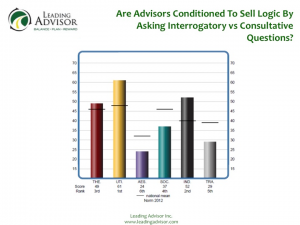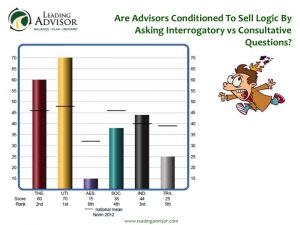[vsw id=”HWvd1BIm3Tw” source=”youtube” width=”597″ height=”336″ autoplay=”no”]
Become a Value Added Advisor
The slide is a benchmark of the 6 strongest values of the strongest advisors in North America.

Going from left to right, the first value score that we’re looking at is:
Theoretical. The red one. And so High Theoretical indicates an interest in knowledge and information — an interest in life insurance and an interest in money.
The next score is the yellow one — is Utilitarian value which is an interest in money, time, what am I getting out of my assets so to speak and return on investment.
The next one, the purple one is Aesthetics — an appreciation for art, architecture, fashion, nature and design.
The next one is Social – people.
The next one, the black one, is Personal Power, Inner Strength.
And the last one, the silver or grey one, is Traditional — how one follows the rules.
This benchmark that I’m showing you is a demonstration of the 6 strongest values of the strongest advisors in North America.
The first value is Utilitarian. Capital return on investment.
The next one is Theoretical Knowledge and Information.
The next one is Individualistic — personal power and inner strength.
So one has to have an interest in return on investment – money.
Next one is… they have to have an interest in studying, money, life insurance.
And the next one is they’ve got to have the personal power to be able to ask the client about what’s important to them? What’s their vision? What’s important?
What do they want to protect?
What’s the legacy that they want to be able to provide?
And then the advisor presents them with some strategies and then the advisor has enough personal power and inner strength to be able to deliver it.
Are You a Complicated Statistician?
Now, look at this values score below and then notice how it changes and this is going to explain to you why an advisor can get into being a complicated statistician and start asking too many interrogatory questions.

Look at the Utilitarian value. Look at the difference in the yellow values score. I’m going to click back and forth between the slides and look where the utilitarian value has gone.

It’s gone through the roof and so as I said, that value is about money, time, return on investment. And what’s happened there… it’s switched from a Utilitarian value; you could say the value of abundance, to the unmet need of safety and security. It’s shifting from adding value to the client, to being more about safety and security, getting caught up in the reasons of the advisors and not necessarily the reasons of the client.
The other thing you will notice if we flip back to the original benchmark, the strongest value score of most North Americans. Notice the theoretical score and now look at where it’s gone. It’s gone significantly higher and what’s happened there is that’s gone from a value of wisdom to an unmet need of worthiness. The advisor doesn’t believe they know enough so it causes them to do too much studying. They get caught up in knowing everything there is to know about every blessed financial product and insurance product under the sun. The problem with that is they present nothing and what that does is creates a tremendous amount of stress and anxiety and then what happens is they emote that stress and anxiety when they’re sitting in front of their client asking them about a needs analysis survey before they’ve asked important questions of their clients.
What’s important to you? Who do you love?
Get to know the clients before getting into the statistics.
This Video / Transcription was inspired by John Wheeler Jr., Water Tower Financial

International Values and Behavioral Analyst, Business Coach, Speaker and Author
Executive Coaching Tips for Financial Advisors
Speaking at a City Near You
